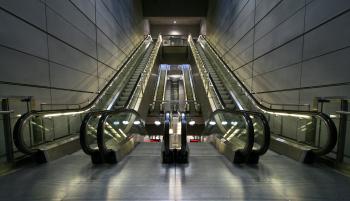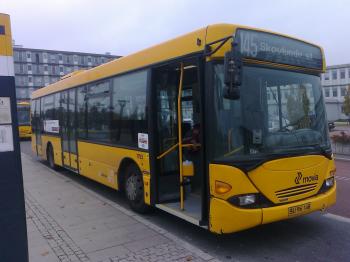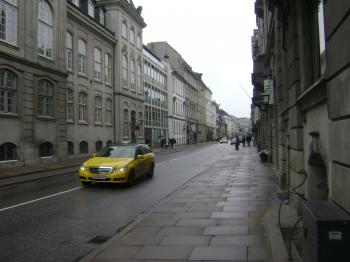Getting Around Copenhagen
Getting Around Copenhagen
All City Transport Options: What Locals Use and What’s Best for Tourists
General Overview
Getting around Copenhagen has its own unique rhythm. You’ll notice locals never bother with taxis unless they’re absolutely in a pinch. It’s much more common for us to hop on a bike, catch a bus, or take the metro. And honestly, Copenhagen's public transport is super efficient, which is a relief compared to some other cities I've visited.You’ve got a few main modes of transport here: buses, metros, and the S-tog (that’s our local train system). The metro runs frequently throughout the day, usually from around 5 AM to midnight. If you’re out late, the night buses take over, but they can be a bit of a puzzle to decipher if you’re not used to them. Ticket prices are reasonable compared to cities like London or Sydney, with single tickets at around 38 DKK ($5.70).
A common tourist mistake? Thinking you have to buy a ticket for every journey. If you’re planning to hop on and off, look into the Copenhagen Card or a regular travel pass which can save you some kroners over time—especially for multi-day trips.
Oh, before I forget, a solid tip is to download the DOT app for real-time information. It’s saved me more than once when I’ve misjudged the time it takes to get from one place to another.
One frustrating experience I had was trying to navigate the S-tog during rush hour. The trains get packed, and it’s easy to miss your stop when it’s squished in there. But, on the flip side, I was pleasantly surprised by how efficient the bike lanes are—everyone just zips around like it’s second nature!
For a money-saving tip, consider getting a Rejsekort (travel card). It offers discounts on trips, especially if you’re making longer journeys. Another essential is knowing that off-peak prices are lower, so avoid traveling during regular work hours if you can.
Weather can also play a role in your transport experience here. Rainy days can make biking less pleasant, so you might want to chase a bus instead. For example, if you're heading to Nyhavn, take the 26 bus—it's a scenic route and often less crowded compared to the metro.
So, in summary, the transit system here keeps the city flowing smoothly. Embrace the bikes, check out the metro lines, and keep that DOT app handy. Just remember: it takes a bit of getting used to, but once you’re in the groove, you’ll feel like a local navigating the charming streets of Copenhagen!
Types of Transport

popular with tourists
The metro in Copenhagen operates frequently, with trains running every few minutes on the M1 and M2 lines, providing easy access to key areas like the City Center, Nyhavn, and the trendy Vesterbro district. Tickets can be purchased at machines located in all metro stations, or you can use the DOT app for mobile ticketing; a single adult ticket costs about 38 DKK and is valid for 1.5 hours across the zones. A valuable tip for tourists is to consider a Copenhagen Card, which grants unlimited access to the metro and other public transport, along with free entry to many attractions. Always ensure you’re traveling in the correct direction by checking the electronic boards at the station and remember to validate your ticket before boarding to avoid fines. The metro is safe, but like any busy transit system, keep an eye on your belongings, especially during peak hours.

popular with tourists
The bus system in Copenhagen is extensive, providing access to various neighborhoods and tourist attractions such as Tivoli Gardens and The Little Mermaid. Tickets can be purchased from ticket machines at bus stops or via the DOT app, with a typical fare starting at around DKK 24 (approximately $3.50) for a single journey within the city zone. A great tip for tourists is to purchase a City Pass, which allows unlimited travel on buses, metro, and trains for one or multiple days, making it a cost-effective option for exploring. To save time, check the bus schedules and live updates on the DOT app to avoid long waits, and ensure you board the correct bus by verifying the route number displayed on the front. Lastly, for safety, always remain aware of your belongings, as crowded buses may attract pickpockets.

Taxis in Copenhagen are widely available and easily recognizable by their black and yellow color scheme. Fares are metered, with typical costs starting at around 45 DKK ($6.50) for the base fare and approximately 10-15 DKK ($1.50-$2.25) per kilometer thereafter, so be prepared for a total cost that could range from 100 DKK ($15) for shorter trips to 400 DKK ($60) for longer distances, such as to or from the airport. For ease of payment, taxis accept credit and debit cards, and it's advisable to confirm this with the driver before your ride.
A key tip for tourists is to always ask for a receipt at the end of your journey, which will include useful information in case you leave anything behind, and it may help with any misunderstandings about fares. Additionally, if you need to reach popular destinations like Tivoli Gardens or Nyhavn quickly, consider calling for a taxi or using a taxi app for prompt service, especially during peak tourist hours. Lastly, be cautious late at night; while taxis are generally safe, it's a good practice to avoid accepting rides from unmarked vehicles.
A key tip for tourists is to always ask for a receipt at the end of your journey, which will include useful information in case you leave anything behind, and it may help with any misunderstandings about fares. Additionally, if you need to reach popular destinations like Tivoli Gardens or Nyhavn quickly, consider calling for a taxi or using a taxi app for prompt service, especially during peak tourist hours. Lastly, be cautious late at night; while taxis are generally safe, it's a good practice to avoid accepting rides from unmarked vehicles.
Here you can learn about all types of transport in Copenhagen. What transport is available, how to reach tourist attractions and which mode of transport is optimal.
